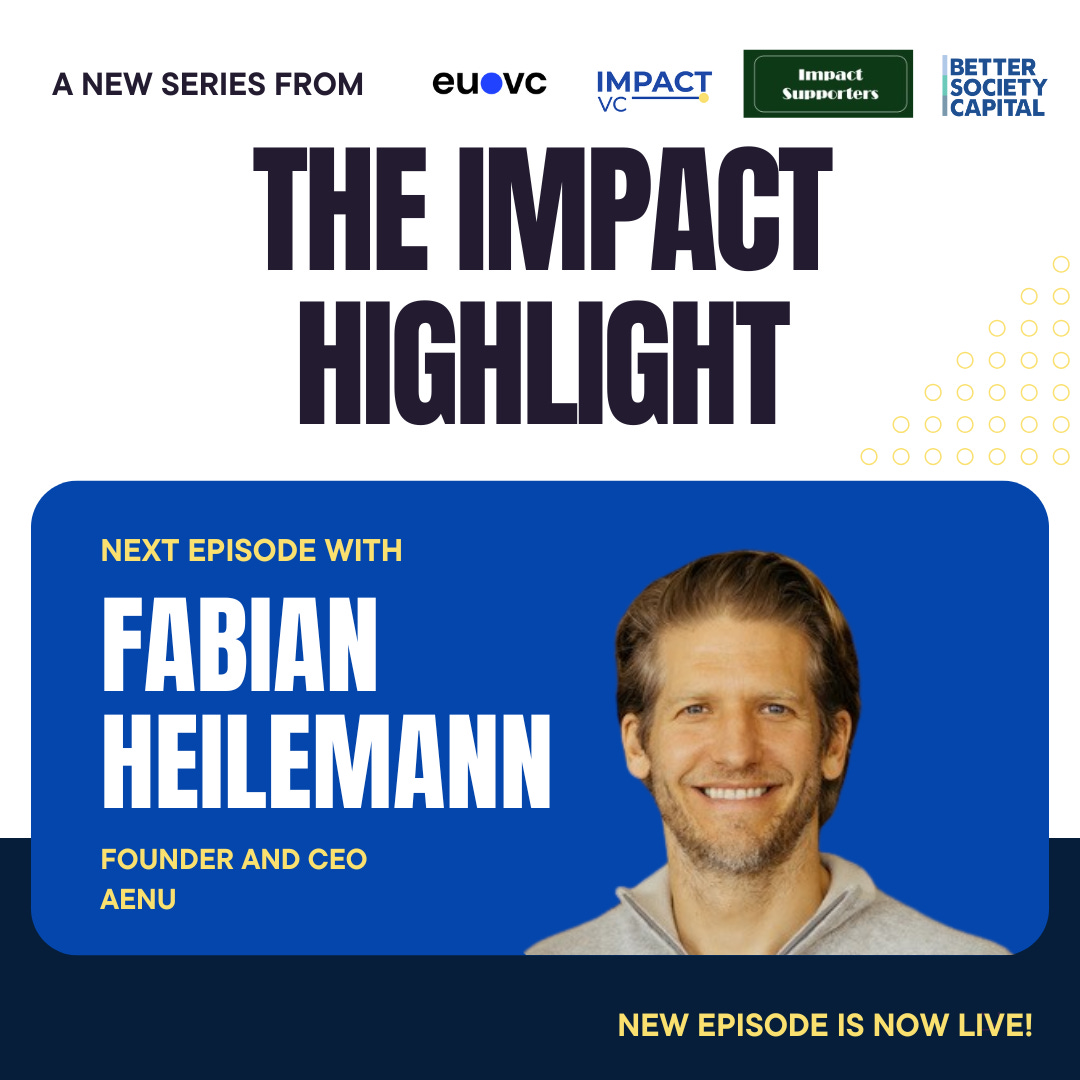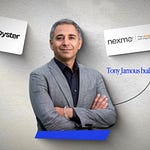Greetings to 3k+ Impact Supporters! 🌍 It’s August Solliv 👋 Today’s article and podcast are part of The Impact Highlight Series - a podcast series that I run with EUVC (Andreas Munk Holm) and ImpactVC/Better Society Capital (Douglas Sloan & Ellie Broad). This is one of 10 interviews with some of the most prolific impact investors in Europe. In this series, I don’t write a full article, but the interviewee prepares the answers for you directly 🥳
The interview is with Fabian Heilemann (Co-Founder and GP at AENU) where we discuss some of the decisions that he made when building his own climate VC, the transition from Earlybird to AENU, and what it takes to become an impact unircorn founder 🌱
Agenda:
Meet Fabian: From founder to Earlybird GP to climate VC
When the science became too loud to ignore
Early mistakes in angel investing—and how it shaped AENU
Building AENU: Clean slate, pure play, Article 9
Impact metrics that matter: CO₂e saved or removed
Walking the talk: Travel policy, green ops & founder integrity
Challenging the 10-year VC fund model
Why climate tech exits need more patient capital
The failed evergreen experiment—and what it taught them
Climate vs. biodiversity: The next systemic wave
Why Sequoia won’t fix this—but emerging managers might
Founder redemptions: Building for impact after fast commerce
The reality of fundraising as an impact-first VC
AENU’s three pillars: Energy, decarb & climate adaptation
A look at the person behind - who is Fabian Heilemann?
“From founding one of Germany’s early unicorns to becoming a leading voice in impact VC, my journey has always been fueled by a sense of urgency. The climate crisis isn’t a distant threat—it’s a now problem. Building AENU was my answer to the question: How can capital serve the planet rather than just extract from it? My personal mantra is simple: If you’ve got privilege, use it. Use it to rewire incentives, empower the boldest entrepreneurs, and rebuild broken systems.”
Grew up with my brother in a village, built my first company with him there, a waffle stand
Built DailyDeal, exited to Google in 2011.
Built Forto (unicorn status)
Realized the VC industry lacked long-term vision—started AENU to change that.
Passion for zen philosophy, macroeconomics and system transformation.
You have been on a journey from a generalist VC to an impact VC. What are the key differences that you see? What are your key learnings when it comes to impact?
Impact requires a fundamentally different underwriting approach: mission integrity, systems change potential, and long-term viability are core filters.
The dual lens: financial return + net positive externalities.
“What gets measured gets funded”—why we built internal impact KPIs and frameworks.
Key learning: You can’t retrofit impact later. It must be in the DNA.
Who are the founders of the impact unicorns of tomorrow? Do they have the same profile that you had as a tech unicorn founder? What else does it require?
They are often mission-first, interdisciplinary, emotionally resilient.
From climatologists to “reformed” consultants.
Building a unicorn taught me about speed, culture, grit—but in climate tech VC, you also need radical patience.
Lesson: The “10x engineer” of impact is a systems thinker with execution speed.
You first built the climatetech investment arm at Earlybird and then you built AENU. What makes you certain that climatetech investments will deliver the necessary results to LPs? Especially in light of Cleantech 1.0 and recent “R.I.P. Climatetech” waves.
Cleantech 1.0 failed due to timing, capital intensity, and lack of policy tailwinds.
Climatetech today benefits from:
Policy megatrends (IRA, EU Green Deal)
Talent shift post-COVID
Infrastructure-as-a-platform opportunities
“We’re not betting on tech, we’re betting on inevitability.”
AENU is thesis-driven and focused on Europe: we go deep into verticals like energy storage, circularity, industrial decarb.
AENU started as an evergreen structure but has moved away from it. What are the advantages/disadvantages of an evergreen model?
Evergreen was philosophically aligned but structurally limiting for fundraising and alignment.
Standard VC structures are easier for institutional LPs.
But we still challenge the model via: longer holding periods, carried interest tied to impact KPIs, higher transparency, cutting edge impact methodology.
Belief: The VC model must evolve, but founders can’t wait—we build within constraints while pushing boundaries.
What’s your best tip for generalist VC investors about impact?
“Stop thinking of impact as a tradeoff. The most valuable companies of the next decade will be built on solving systemic crises. Look for founders solving hard, boring, necessary problems.”
What’s your best tip for other impact VC investors?
“Be rigorous. Demand feature parity and price parity, compared to legacy solutions
Avoid green premiums, and seek fast commercial ROI for the customer
“don’t compromise on commercial excellence.”










